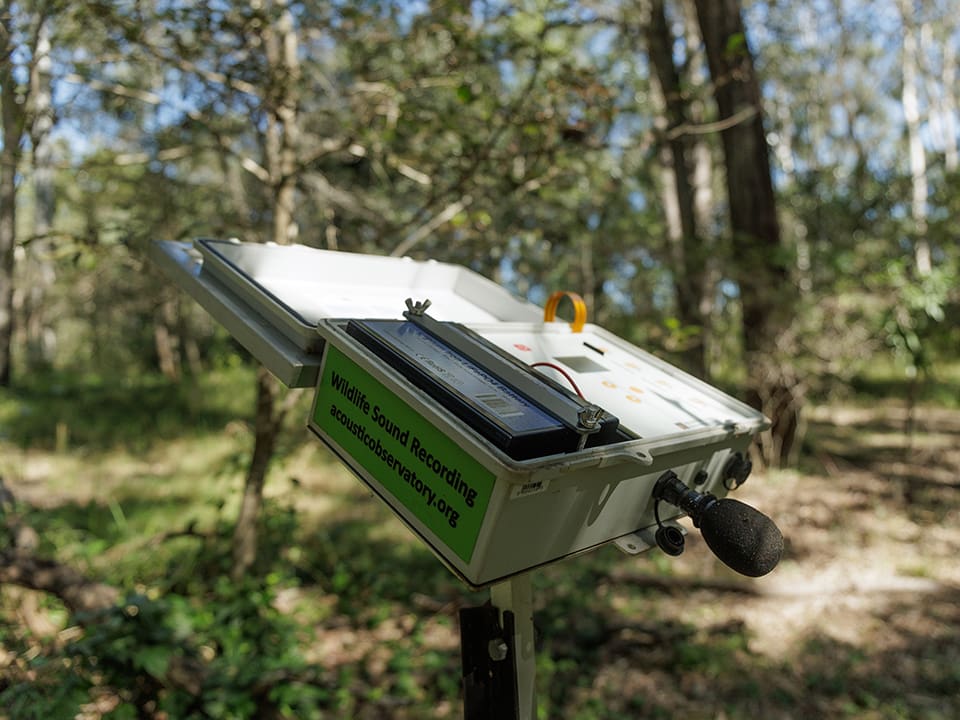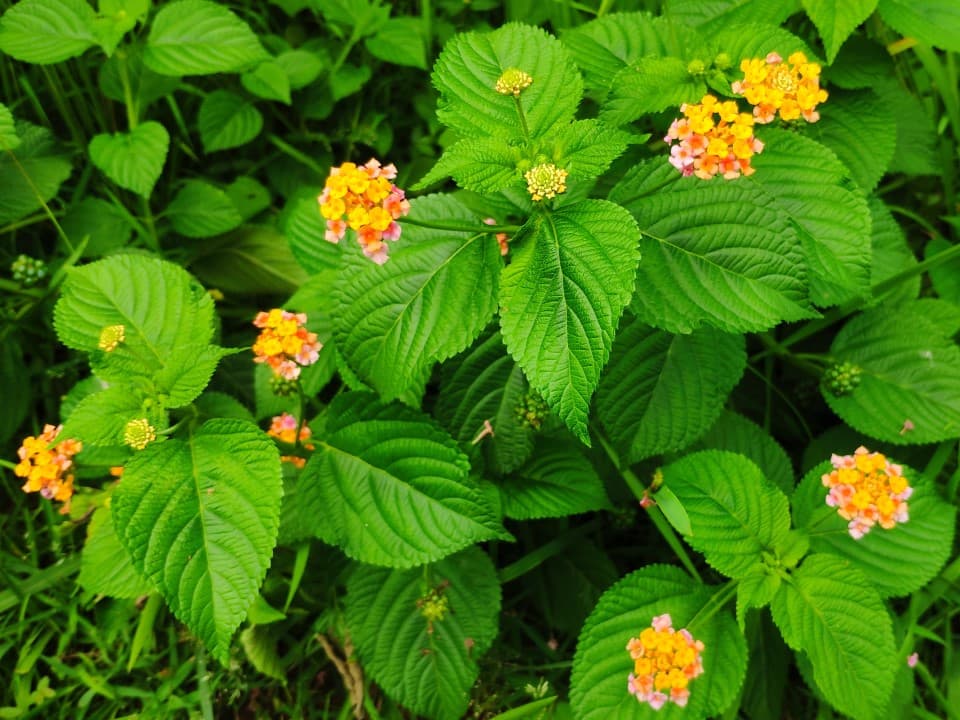What is acoustic monitoring?
Ecologists and conservation researchers use sound and recordings to identify and monitor animals and ecosystems.
Listening to the sounds of the environment over time allows researchers to determine the health of ecosystems and access large amounts of data from remote locations more easily.
What are acoustic recorders?
Acoustic recorders are solar powered and mounted either on trees or steel posts. Each acoustic recorder stores data on high-capacity SD cards, which are collected and replaced at least once a year.
There are now four acoustic sensors deployed at SERF, which is home to a wide range of audible species, including Australia’s largest nocturnal bird, the Powerful Owl (Ninox strenua). These recorders form part of the Australian Acoustic Observatory, a network of recorders around Australia.
Managing weeds
Lantana (Lantana camara) is a thicket-forming shrub implicated in the widespread loss of native plant diversity. Lantana plants release 'allelochemicals' into the soil, which inhibit growth of other plants. Lantana can also modify its growth and development to adapt to and compete in new environments. As a result, you may notice that lantana looks different in different places, with unique characteristics in each region.
Can you spot the lantana?
At this site, you can see the stark difference between areas with and without lantana management. In areas where lantana is left uncontrolled, it forms dense thickets that smother native vegetation, creating a monoculture lacking plant biodiversity.
Efforts to manage lantana infestations have become crucial for trying to restore the natural ecosystem and protecting native flora and fauna. Various control methods, such as, manual removal, herbicide application, and biological control using insects and pathogens, are being used to combat the spread of lantana at SERF.

